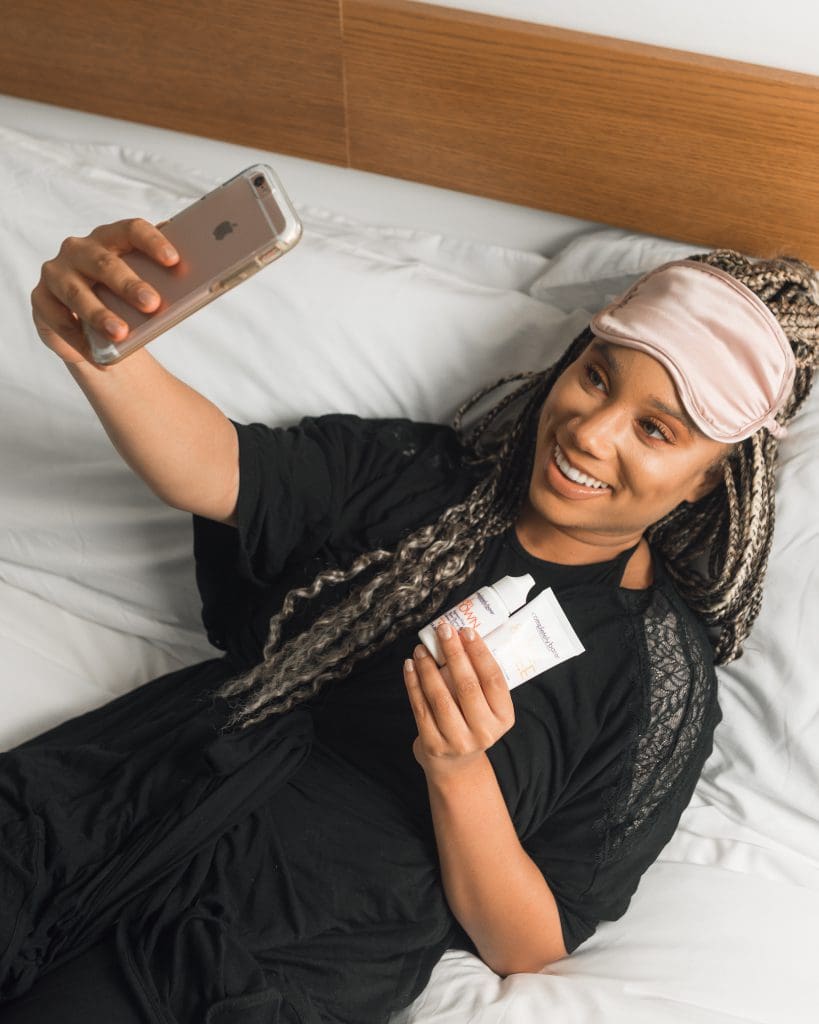Self-Care and Influencers

Most people think of self-care as an ongoing process of maintaining one’s living space, hygiene, and ensuring that basic needs are being met. It’s not always easy or fun, but it’s an essential component to being well. While these activities can seem easy to manage for most, for those dealing with mental illnesses such as depression, anxiety, or other conditions, these tasks require a greater deal of time and effort and may not be as often maintained. Social media has also contributed to the idea that buying all the right beauty/wellness products can maximize the outcomes and the products may feel like a necessity in the minds of consumers.
If you search online for the value of the self-care and wellness markets, you can see that the self care industry is valued around $10 billion and is only a part of a much larger market of wellness which as of 2018 was valued around $4.5 trillion. While there is nothing wrong with buying the occasional bath bomb or doing facial masks or splurging on a new hygiene gadget, these statistics show that these purchases are more than occasional and show trends of increase across time. Naturally, most companies will use some sort of advertising to attract you to their products, and while these ads vary in terms of style, tone, language, the goal will be the same: “buy our product. It will provide something you need.”
Passive advertising, or the use of more natural ads in ways that aren’t obtrusive (think of product placement in your favorite TV shows, movies, and video games) is so commonplace that it often seems to be the primary way advertising is done. Passive advertising’s main drawback is the time commitment needed to build a following, but if a brand can use an already established entity such as a celebrity or other media personality, it can rapidly speed this process as seen in many ads on television. As advertising needs to grow the brand it represents, it will regularly redesign its ad strategies to capture the attention of younger age groups.
The easiest way to do this is to take advantage of the stress and pressure that teens and young adults are under from school, parents, their peer groups, etc. to be at their best at all times. Since social media is mostly used by younger age groups, it makes the most sense to advertise there. As different sites and apps gain a big enough userbase, these brands will create accounts and generate content that is just advertising their brand, but is not visibly different than other content unless the site specifically marks it as “advertising” or “sponsored.” Because of this presence, many people like, share, and follow brands they like on social media. If they don’t, they likely follow someone on social media who does.

This often occurs in the case of social media influencers who promote an idealized vision of a “perfect life” while being paid to promote specific products that often come with a very high price tag. This is not to say that they are being deliberately manipulative or harmful. It makes sense to sell something when there is no alternative in an economic system like capitalism which requires money for survival, but there are risks to this advertising when the consumer is a younger person.
What’s important to consider is that while the product may be a good product, the product alone isn’t helping the influencer. Rather, it’s the money they are being paid, and because this is often their full-time job, they have more access to these products and to free time and other aspects of life that can make their self-care much easier to complete than the average young person. Additionally, part of being an online presence is acting and showing off a “perfect life” that often doesn’t show their own anxieties and stresses caused by their work.
If subscribers of these creators regularly buy these products and don’t have the same outcomes set by the hyper-glamorous lives of online celebrities, it can create a harmful loop that can have negative impacts on the mental health of the consumer. This is especially true in the case of beauty, health, self-care, and other wellness industries where self-image and self-esteem often end up very associated with these products.
The best thing to do when being a follower of content creators that incorporate advertising is to read other reviews of the product and also determine what about the product is desirable and if it will actually provide self-care in a meaningful way or if it will simply be a a temporary boost that results in a cycle of needing more, potentially causing debt, or worse, could potentially be a harmful or inferior product
Do you use products for your mental health and wellness? Have you ever bought a product because of an influencer? Have you ever seen a sponsored post for healthcare and/or mental health products?




Recent Comments